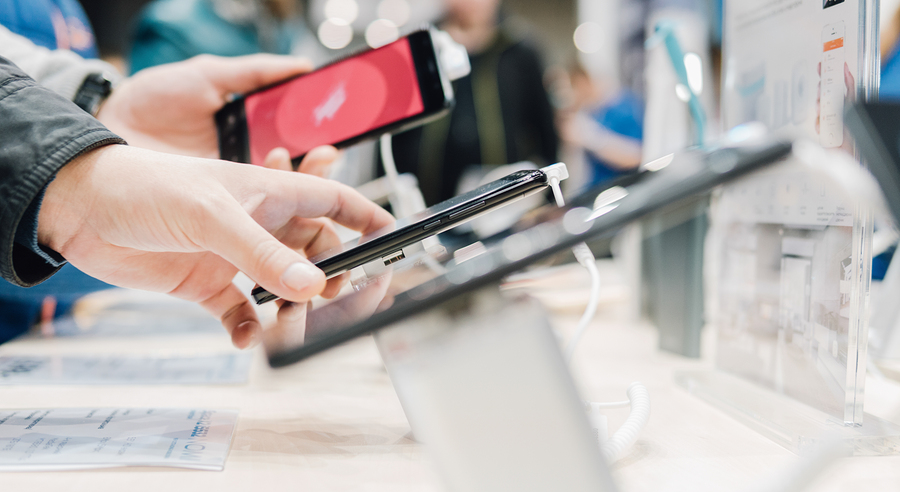Koreans, Chinese and Americans have embarked on the race for foldable portable smartphones, some of them for several years now. The finish line seems to be in the beginning of 2019 – unless it’s late 2018, according to certain rumours. Who will be the first across it? Who are these actors and what are their technological contributions?
Samsung in the lead… but for how long?
For seven years Samsung has been working on the project of a foldable smartphone. From its first prototype – large and embarrassing – presented in 2011, the Korean company has made numerous advances and has overcome many challenges: in 2013, incorporation of a flexible plastic screen was far from being achieved; in 2014, Samsung attacked an encapsulation technology so the screen would be protected from mould and air-related damage; in 2017, the main problem to be tackled was being able to fold the smartphone without damaging any internal components. In 2018, this ambitious project – dubbed Galaxy X in 2016 – is beginning to reveal its characteristics: flexible touch screen will use OLED technology (organic light emitting diode), essential for plastic media; when unfolded it will measure seven inches while folded it will look like a portfolio on the face of which the user will have access to basic information. In parallel, this project necessitated the development of a curved 6000 mAh battery, thus lengthening the charge life of the device. So when is launch scheduled? Continually postponed for several quarters, some say it could happen in February 2019 at the Mobile World Congress (MWC) while others say January 2019 during the Congress Electronics Show (CES). Whatever the date, it will be necessary to be ready to pay the tidy sum of $2,400 CAD…
Competitors not far behind
Huawei is a big player that needs to be taken seriously. In worldwide sales of cellphones, this Chinese company has just snatched Apple’s spot (12% of the market) to become the second largest mobile phone vendor in the world (15.7%) behind the eternal number one Samsung (20.7%). On the foldable smartphone segment, Huawei, created in 1987 by Ren Zhengfei and allied to BOE Technologist – a manufacturer of OLED flexible screens – seems to be on track, according to some unofficial sources, to become the first company to offer folding screens… by the end of 2018. But this competition is far from being a duopoly between Huawei and Samsung: LG, a Korean brand, has filed a patent on a deformable hinge technology – like Motorola –; Oppo, a Chinese manufacturer is working on a foldable cellphone with an air cushion and on a device equipped with three retractable screens; Lenovo, another Chinese manufacturer, is developing a very flexible cellphone model that is worn on the wrist (like a bracelet) and whose screen also makes use of OLED technology. As for Apple, it would appear that by 2020 the company will release its first foldable cellphone, according to the very serious Bank of America Merrill Lynch.
Aware of the potential of the smartphone market for a few more years (a potential of 1,710 billion units to be sold in 2021 according to the Statista research institute), manufacturers in every direction are striving to take a step forward not only in terms of technological advances but also on… the launch date. May the fastest win!
